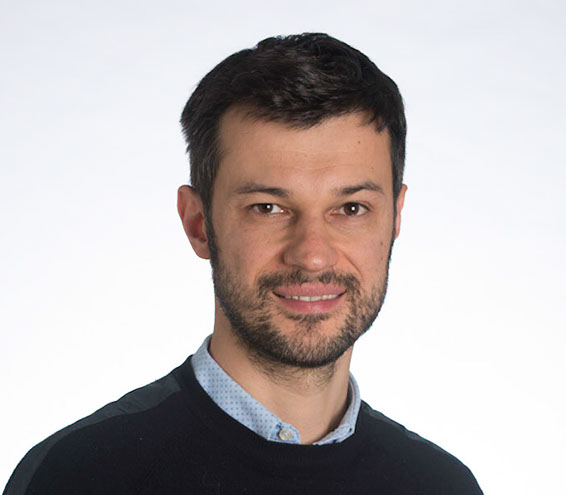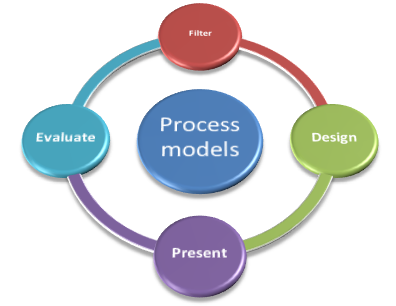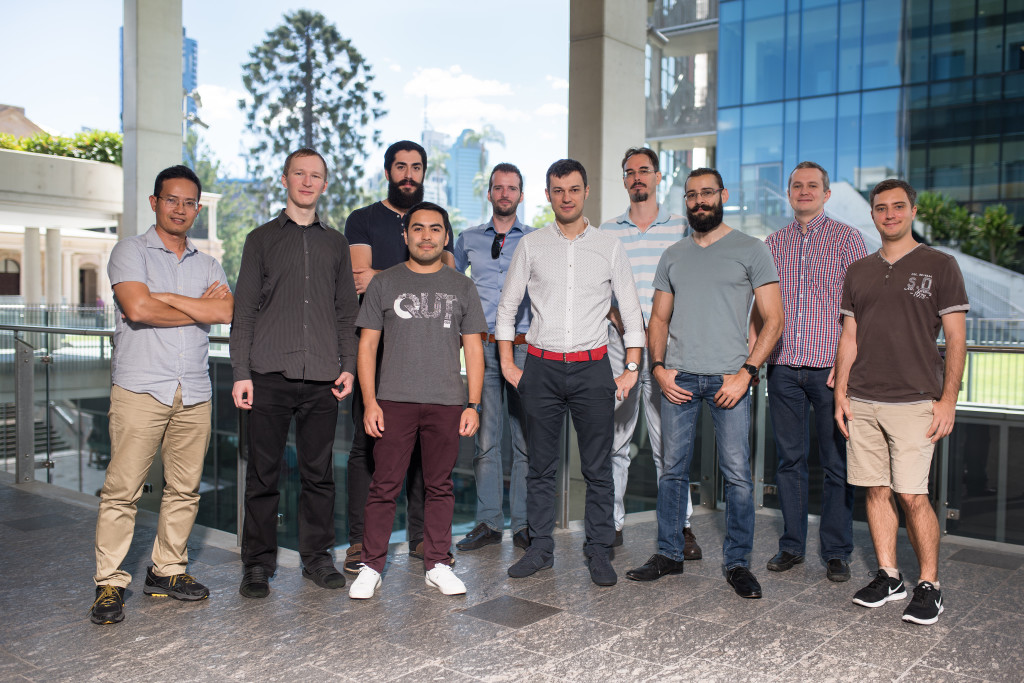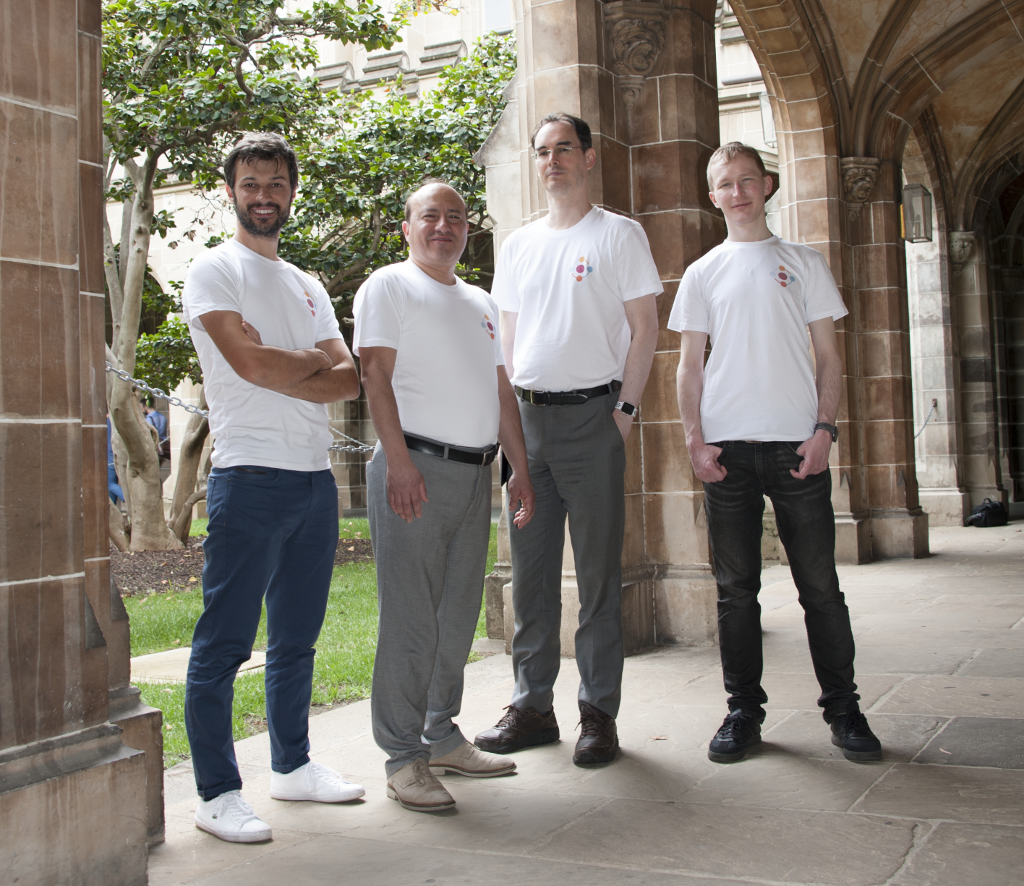From Research Vision to Startup: The Story of Apromore
academic stories developers pointTalking with Marcello La Rosa
 Ten years ago, freshly minted PhD graduate Marcello La Rosa started a journey that would take him from an embryonic research vision of a “business process knowledge repository” to Apromore Pty Ltd – the first commercial vendor of open-source process mining solutions. We interviewed Marcello and asked him what it takes to go from a raw research idea to a successful spin-off.
Ten years ago, freshly minted PhD graduate Marcello La Rosa started a journey that would take him from an embryonic research vision of a “business process knowledge repository” to Apromore Pty Ltd – the first commercial vendor of open-source process mining solutions. We interviewed Marcello and asked him what it takes to go from a raw research idea to a successful spin-off.
Marcello, tell us a bit about yourself, your career and how you got in touch with process mining!
I started my academic career with a concurrent position as postdoc and senior lecturer on business process management at the Queensland University of Technology (QUT) in 2009. I had just completed my PhD under the supervision of Marlon Dumas, Arthur ter Hofstede and Jan Mendling, on the topic of variability management in process-aware information systems. It was the apex of process modeling & automation, with vendors pushing for intelligent BPM Systems. Process mining was still in its infancy, a side topic of BPM with a small research community mostly revolving around the work of Wil van der Aalst.
My first contact with process mining was three years later, in 2012, in the context of a project aimed at managing large collections of process models. I had just been promoted to Associate Professor and one of my PhD students, Chathura Ekanayake (now Associate Director at WSO2) was working on techniques for supporting process standardization initiatives by discovering “cloned” fragments within process model collections. One day we thought: What if we could automatically discover an entire family of process models from an event log? This collection of models would be more faithful to reality, and hence any insight into standardization opportunities would be more reliable. Whether we got there or not is another story. What matters here is that this work led to a paper titled “Slice, Mine, Dice: complexity-aware automated discovery of business process models” which put forward the idea of discovering process model families from event logs, with some interesting properties. The idea attracted interest from the research community, and the paper won the best paper award at the BPM Conference. That was my first step in process mining. My appreciation for process mining rapidly grew as research and technology developments were gaining higher levels of maturity. Fast forward eight years, and today all the research my team is involved in revolves around process mining.
That first paper on process mining became the centrepiece of a large grant proposal that I won in 2015. This grant, and some other achievements, eventually paved the way to my promotion to Professor in 2015. In 2018, I decided to trade the sub-tropical climate of Brisbane for the continental vibe of Melbourne: I relocated with my research team to The University of Melbourne, where I took the position of Leader of the Information Systems group and later became Deputy Head of School for Engagement.
How did the idea of Apromore come up? When and how it happened that from an advanced process model repository it became a full-fledged process analysis platform?
The idea to create Apromore presented itself in the form of an email that I received from Wil van der Aalst during the 2008 Christmas break. Back then I had just submitted my PhD thesis for examination and was on leave in Italy. Wil, together with Hajo Reijers and Remco Dijkman, had just secured a new research grant in the logistics space at TU/e, and wanted to invite me to spend some time in Eindhoven to work on the project, given my background on process model variability. A key deliverable of this project was the design and development of an Advanced Process Model Repository, called “AProMoRe”. You know, our Dutch colleagues love acronyms…
The topic was clearly of interest to me and I decided to take up the challenge. In June, I moved to Eindhoven. The plan was to spend a couple of months there (Wil pitched it to me as a sort of “mini-postdoc”) with the goal of setting the coordinates of the project and triggering work on AProMoRe. Soon I realized that I was before something bigger than a two-month project: what we were after was not a simple container for process models, but a tool that could help organizations derive value from large process knowledge bases. I saw this as an opportunity to generate impactful research by bringing together different research streams into a single software artefact. Process modeling, similarity search, model merging, clone detection, model querying and standardization – all these topics were resonating in my head: they could be linked together in a single place, and that was Apromore. I could clearly see the business benefits such a solution could bring about. So, I proposed to build a working group around this idea, and reached out to Marlon Dumas and his colleague Luciano García-Bañuelos in Tartu, and to Jan Mendling in Berlin. The very first Apromore team had been formed, and after a few months, the first paper was born: “APROMORE: An Advanced Process Model Repository” (the paper would later appear in Expert Systems with Applications).
The first working prototype was released on 27 July 2010, it was Version 0.1. Much of that implementation was done by Marie-Christine Fauvet, who had joined the team as part of her visit to QUT. That same year, with some of my QUT colleagues we applied for two competitive grants which revolved around or were related to Apromore, and much to our surprise, we got both projects funded. This provided a great impetus to advance research in Apromore.

Since its first release (see the very first logo on the right), Apromore was conceived as an open-source software platform to display our own research. So, when I pivoted to process mining in 2013, Apromore naturally followed suit. Since then, we have frantically worked on incorporating a great deal of our process mining research into the tool, in the form of plugins (a photo of the research team at that time is below). After ten years, Apromore has become a collaborative process analytics platform supporting the full spectrum of process mining functionality, from automated process discovery through to predictive monitoring. At its core, the tool is underpinned by an enterprise process model repository and much of the initial functionality we had developed in the early days, such as process model similarity search and model merging is still there, but now can be used in conjunction with process mining techniques. For example, it is possible to discover two process model variants in BPMN from two slices of the same log, merge them into a single consolidated model and animate the two sub-logs on top of this model to understand differences in temporal dynamics between the two process variants.
 Why open source?
Why open source?
Open source is synonym of transparency, openness and extensibility, and underpins our true desire to democratize process mining. My love for open-source software development came from my former PhD supervisor Arthur ter Hofstede, who gave me the opportunity to appreciate it by involving me in a large open-source research initiative back at the time of my PhD: YAWL.
The open-source model, in line with the academic principle of open knowledge, worked quite well for Apromore since its early days, and today we can see its fruits: the community version of Apromore counts contributions from more than 15 universities, research institutes and private organizations and an open-source community of thousands of researchers, students and professionals who have been using the tool and experimenting with it for over ten years. Often when companies reach out to us, we find out that they have already been using the software for a while and are now ready for the next step in their process mining journey.
When did you realize that you were working on something more than a “research prototype”? How did this eventually lead to a commercial spinoff?

Vicinity to industry has always been a key characteristic of the Apromore initiative. One of the very first grants we attracted to sustain the initiative, was co-sponsored by a large Australian insurance group, Suncorp. So notions like “industry relevance” and “fit for purpose” have always been embedded in the product. Even in the early days, it was not uncommon to receive inquiries from organizations interested in using Apromore in production. Later, as the product matured, we started using it for our own consultancy on process mining, and again, clients and consultancy partners alike were asking about the tool we were using and whether they could have access to it. But a couple of events constituted a tipping point in Apromore’s history. First, it was a visit of Mathias Weske to Brisbane back in 2015. We gave him a demo of the tool. He commended us for our efforts and concluded: “This is not a research prototype, you’ve built a product!” Three years later, we were at the APAC Gartner IT Symposium talking process mining with one of our partners. Our little booth was flooded with conference delegates and it was a continuous tool demonstration for the whole three-day. It was then that I realized that the market was ready for an advanced process mining tool.
The commercialization of Apromore has been made possible through significant seed funding from The University of Melbourne. The University has strongly believed in this project and has actively encouraged us to explore commercialization opportunities. I would also like to acknowledge the support of the many institutions, research labs, funding bodies and private organizations that have contributed to the Apromore initiative, and chiefly my former university QUT, where the first steps in the Apromore journey were made, as well as our key university partner, the University of Tartu, through Marlon Dumas and his team.
 In December 2018, encouraged by my Head of School, Uwe Aickelin, I decided to take on the challenge of commercializing Apromore. I reached out to Marlon, with whom I had researched, designed and developed most of the functionality behind Apromore, Simon Raboczi, Apromore’s long-time chief software architect, and Ilya Verenich, a young PhD graduate who had worked under Marlon and myself to bring predictive monitoring into Apromore. Without the three of them (in the photo on the right), this chapter of Apromore would have never started.
In December 2018, encouraged by my Head of School, Uwe Aickelin, I decided to take on the challenge of commercializing Apromore. I reached out to Marlon, with whom I had researched, designed and developed most of the functionality behind Apromore, Simon Raboczi, Apromore’s long-time chief software architect, and Ilya Verenich, a young PhD graduate who had worked under Marlon and myself to bring predictive monitoring into Apromore. Without the three of them (in the photo on the right), this chapter of Apromore would have never started.
By September 2019, we had already acquired the first paying customers, so we decided to spin out of The University of Melbourne, and found Apromore Pty Ltd. Since then, we have been overwhelmed by the strong market interest in the product and its services: business partners, integration suppliers and of course end users keep approaching us to learn more about Apromore and how it differs from other products in the market.
Now Apromore is turning 10! Any special celebrations you want to reveal? Any particular moment you recall as memorable? Any uh-oh situations?
Stay tuned for a grand celebration this year! But that’s a surprise!
There have been many memorable moments. In research, every award we received or grant we secured has marked an important milestone for Apromore, because it gave us the energy, and the resources, to keep pushing the bar one step higher. As for the commercialization side of things, securing our first paying customer is of course something we will never forget.
Sure, there have also been some embarrassing moments. One that I recall vividly is a customer pitch using a mobile phone connection. Marlon was holding the phone outside the window as there was very poor coverage, while I was demonstrating the tool on my laptop not too far away from him. We have always done live interactive demos, even when things are not that practicable like in this case. In the end we won that customer, but it was quite an experience. Now we are much more professional and industrialized in our approach, but back then it was only the two of us, his phone and my laptop.
What is Apromore now and what could we expect in the future?
While still firmly anchored in its open-source roots, the tool has now undergone scrupulous reengineering aimed at strengthening aspects such as scalability, reliability and security.
Apromore is available in two editions: Community and Enterprise. The Community Edition is fully open-source and free to use. It features Apromore’s core platform and a curated selection of the experimental plugins developed by the community. The Enterprise Edition is a fully-maintained and supported edition which includes performance optimizations and feature-richer plugins, together with commercially-licensed add-ons and connectors on top of the Apromore core platform.
Being rooted in over ten years of academic research, a distinguishing factor of Apromore is its cutting-edge nature. Two of the pillars of our current research program are data-driven automated improvement of business processes, through a tighter integration with AI algorithms, and Robotic Process Mining, which explores the intersection between process mining and robotic process automation, beyond the scope of task mapping. We can expect these ideas to be productized in Apromore in the near future.
If you could characterise Apromore in one sentence without superlative adjectives (e.g., “best”, “fastest”, “most accurate”) and not mentioning competitors, this sentence would be…?
The first commercial open-source process mining software, underpinned by over ten years of academic research and innovation.
- Academic stories: Pnina Soffer
- From Research Vision to Startup: The Story of Apromore
- Exploring newland: Blockchains and process mining
- BPI Challenges: 10 years of real-life datasets
- End-user’s corner: Bruna Pereira
- ICPM 2020 goes fully virtual!
- Special Issue on Process Mining and Emerging Applications (MDPI Algorithms journal)
- This article has been updated on May 15 2020, 16:33.
- Talking with Marcello La Rosa

